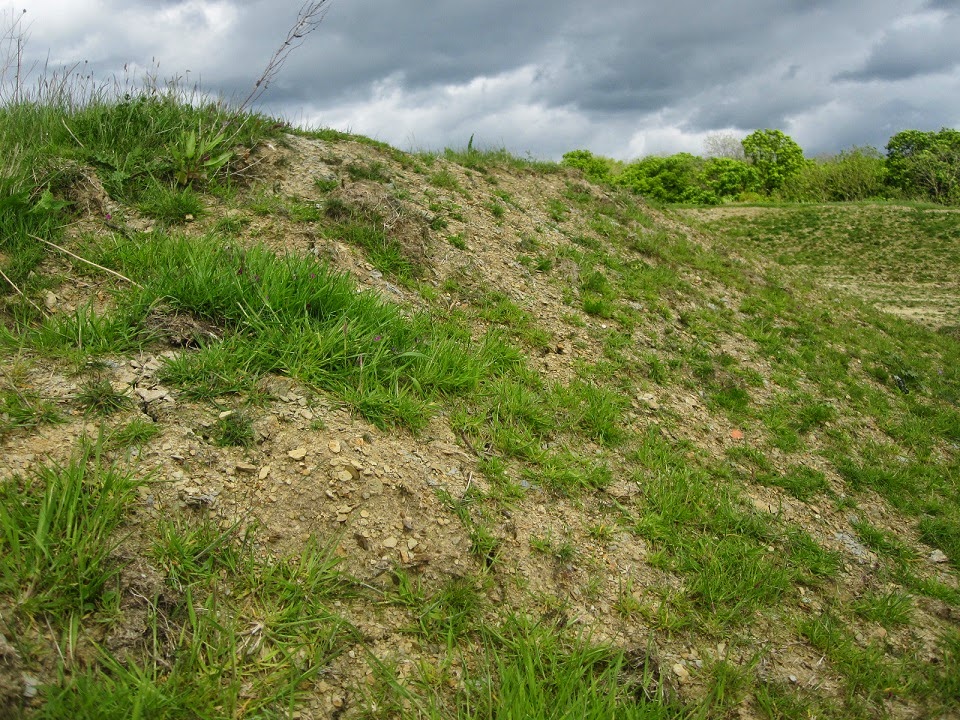This spider (Cyclosa conica) has a rear-end a Kardashian can only dream of...
Invertebrates are highly versatile and incredibly important for ecosystems: grazers, predators, nutrient recyclers, soil aerators, habitat manipulators and plant pollinators; to name but a few. Without them, food webs would collapse and biodiversity (including us) would be non-existant.
Searching for deadwood invertebrates
Here are some of the habitats we were scrabbling about in:
Entomologist in natural habitat, scrub west of Brockley Wood
Shaded section of Man's Brook, Brockley Wood
Brockley Wood South Ride
Excavated soil on a grass slope
River Mole floodplain grasslands
Silver-ground Carpet Moth (Xanthorhoe
montanata)
Spider with no common name (Cyclosa conica), but which I shall now think of as Cone-Bum Spider
Violet Ground Beetle (Carabus violaceus)
Shiny Woodlouse (Oniscus
asellus), which is only half shiny because it is in the process of shedding its old exoskeleton in order to grow
A less common wetland species of woodlouse (Trachelipus rathkii)
Green Hairstreak Butterfly (Callophrys rubi)
Thistle Tortoise Beetles (Cassida rubiginosa), a copulating pair
Flat-backed Millipede (Polydesmus angustus)
I've saved Jeremy's pics until last; these really show the jewel-like quality of certain insects. It's incredible to think that we swat these things away and think of them as a nuisance...
Black Colonel (Odontomyia
tigrina), a type of Soldier Fly
Malachite Beetle (Malachius bipustulatus) female
Longhorn Beetle (Rhagium
mordax) on Hawthorn
Mining Bee (Andrena
carantonica) female on Hawthorn
Orange-tailed Mining Bee (Andrena haemorrhoa) female on Hawthorn
Scorpion Fly (Panorpa communis), male
Hoverfly (Helophilus
pendulus), female
Hoverfly (Xanthogramma
pedissequum)
Wasp Beetle (Clytus
arietis)
It seems like most things want to be a wasp these days.
I'm already looking forward to the follow up survey later in summer!

























No comments :
Post a Comment